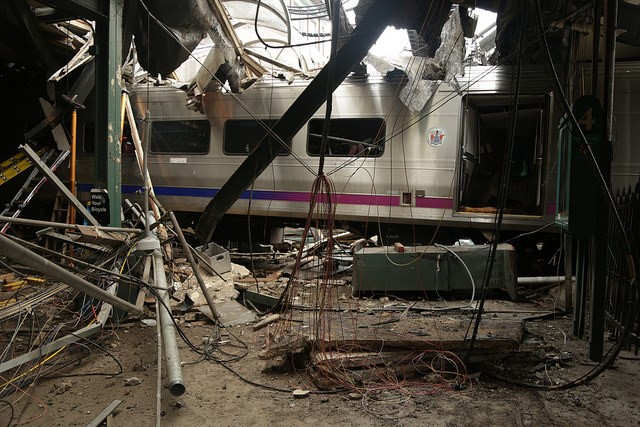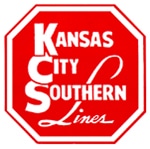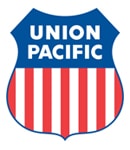SMART Transportation Division Local 278 member Kyle Jones and his wife Samantha received devastating news Jan. 14, when their seven-year-old son Ayden was diagnosed with Acute Promyelocytic Leukemia (APML). This is an extremely rare cancer for someone as young as Ayden.
The cancer was found after Ayden had been taken to urgent care with symptoms of the flu. The urgent care thought he had pneumonia and suggested that Ayden be taken to a children’s hospital in South Bend, Ind., where he was diagnosed with APML.
In order to get the best care possible, Ayden went to Riley Children’s Hospital in Indianapolis where he started chemotherapy and was placed on a high risk treatment path for APML due to the high number of leukemia and white blood cells found in his system. The path, at its shortest – if everything goes to plan, will include 9 to 12 months of intensive chemotherapy and bone marrow testing.
The early stages of recovery are the most dangerous for Ayden. The cancer cells in his bone marrow have stopped the production of blood clotting agents and the cancer cells in his blood are sending signals to clot throughout his body. Because of this, Ayden is at a high-risk for strokes and does not have any way to stop bleeding. If Ayden can make it out of this window of risk for clotting and bleeding, APML has a 100 percent cure rate. Thus far, Ayden has been responding well to the treatments.
“As a father who has had to deal with both a serious medical issue with one of my children, and as a cancer survivor myself, I understand the mental, physical and financial battle that has been put in front of this family,” said Jerry Gibson, SMART TD’s Michigan state legislative director.
“I was fortunate enough to have so many friends, family and strangers step up and assist with donations and prayers. Knowing you have the support of others allows the family to focus on the important task at hand – getting their loved one healthy and home. Please consider donating to this cause so that Kyle and Samantha can get Ayden back home.”
As you can imagine, this type of care and the need for his parents to be at Ayden’s side pose a significant financial burden, but the generosity of others can help alleviate it. Please do what you can to help Ayden and his family in their time of need.
A GoFundMe account has been set up to help the Jones family with the financial burden caused by Ayden’s illness. Click here to donate to the GoFundMe account.
Tshirts in support of Ayden (approved by Ayden himself) are also being sold and all proceeds go directly to the Jones family. Sizes range from YXS – 3XL and cost $25. Click here to buy a tshirt.
Click here for a printable flyer.
Author: amyr
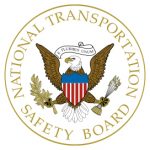
The Sept. 29, 2016, accident on the New Jersey Transit railroad at Hoboken, New Jersey, killed one person, injured 110, and resulted in major damage to the station. The Jan. 4, 2017, accident on the Long Island Rail Road at the Atlantic Terminal in Brooklyn, New York, injured 108 people. Both accidents involved trains that struck end-of-track bumping posts and crashed into stations.
The NTSB found the two accidents had “almost identical” probable causes and safety issues. The board also determined that these safety issues were not unique to these two properties, but exist throughout the country at many intercity passenger and commuter passenger train terminals.
When operating a train into a terminating track, the engineer’s actions, or lack thereof, solely determine whether the train stops before the end of the track. According to the Federal Railroad Administration (FRA), there are currently no mechanisms installed in the U.S. that will automatically stop a train at the end of the track if the engineer is incapacitated, inattentive or disengaged. Some railroads have overspeed capabilities, including New Jersey Transit and the LIRR. However, as shown in these two accidents, once the engineer slowed the train to the prescribed speed, the system did not stop the trains before they reached the end of the track.
In addition to recommending safety-sensitive personnel be screened for obstructive sleep apnea, the board recommended the use of technology, such as positive train control (PTC), in terminal stations and improving the effectiveness of system safety program plans to improve terminal operations. The NTSB made two recommendations to New Jersey Transit, and the Metropolitan Transportation Authority (the parent company of the Long Island Rail Road) and two to the FRA.
“Today’s new recommendations, if acted upon, have the potential to eliminate end-of-track collisions,’’ Sumwalt said. “That translates to protection for passengers on trains, and for people standing on terminal platforms.”
The complete accident report will be available in several weeks. The findings, probable cause, safety recommendations, Chairman Sumwalt’s prepared remarks and PowerPoint presentations used in a board meeting are all available at https://go.usa.gov/xnscj.
The New Jersey Transit Hoboken accident docket, containing more than 1,100 pages of supporting factual material, is available at https://go.usa.gov/xnAGJ.
The Long Island Rail Road Brooklyn accident docket, containing more than 1,400 pages of supporting factual material, is available at https://go.usa.gov/xnAGe.
A privately chartered Amtrak train carrying dozens of Republican members of the House and Senate crashed into a garbage truck just south of Charlottsville, Va.
So far, only minor injuries have been reported amongst the train passengers. One out of the three passengers on the garbage truck has been confirmed dead.
At the time of the accident, the train was en route to the Greenbrier resort in White Sulfur Springs, W.Va.
Click here to read more from CNBC.
Click here to watch coverage from MSNBC.
4th Quarter 2017
Net Earnings: $552 million or $5.33 per diluted share, compared with 2016’s $130 million or $1.21 per diluted share
Revenue: 4th quarter record of $660 million, a 10 percent increase
Operating Income: 4th quarter record of $238 million, a 13 percent increase
Operating Ratio: 64.0 percent, 0.8 point improvement over fourth quarter 2016
2017 Annual Earnings
Net Earnings: $964 million or $9.16 per diluted share, as compared to 2016’s $480 million or $4.43 per diluted share
Revenue: A record $2.6 billion, up 11 percent from 2016
Operating Income: A record $922 million, a 13 percent increase
Operating Ratio: A record 64.3 percent, a 0.6 improvement
Click here to read KCS’s full earnings report
4th Quarter 2017
Net Earnings: Increased by 156 percent to C$2,611 million and diluted earnings per share increased by 164 percent to C$3.48
Revenue: Increased 2 percent to C$3,285 million
Operating Income: Decreased by 7 percent to C$1,301 million
Operating Ratio: 60.4 percent, an increase of 3.8 points
2017 Annual Earnings
Net Earnings: Increased 51 percent to C$5,484 million and diluted earnings per share increased 55 percent to C$7.24
Revenue: Increased 8 percent to C$13,041 million
Operating Income: Increased 5 percent to C$5,558 million
Operating Ratio: 57.4 percent, an increase of 1.5 points
Click here to read CN’s full earnings report
4th Quarter 2017
Net Earnings: Increased 156 percent to a record C$984 million from C$384 million and diluted earnings per share increased by 159 percent to C$6.77 from C$2.61
Revenue: A record 4th quarter with an increase of 5 percent to C$1.71 billion, up from C$1.64 billion
Operating Income: Increased 5 percent to C$753 million
Operating Ratio: A record 56.1 percent, an improvement of 10 basis points
2017 Annual Earnings
Net Earnings: Increase of 50 percent to C$2.4 billion
Revenue: Increased 5 percent to C$6.55 billion from C$6.23 billion
Operating Income: Increased 8 percent to C$2.8 billion from C$2.6 billion
Operating Ratio: Improved 40 basis-points to a record 58.2 percent from 58.6 percent
Click here to read CP’s full earnings report
4th Quarter 2017
Net Earnings: $4.1 billion or $4.62 per share, up from $458 million or $0.49 per share
Revenue: Decreased 6 percent to $2,863 million from $3,037 million
Operating Income: Increased by 12 percent to $1.12 billion from $1.00 billion
Operating Ratio: Improved 6.1 basis points to 60.9 percent from 67.0 percent
2017 Annual Earnings
Net Earnings: Increased 219% to $2.3 billion from $1.02 billion
Revenue: Increased by 3 percent to $11.4 billion, up from $11.07 billion
Operating Income: $3.7 billion, up 8 percent from $3.4 billion
Operating Ratio: 67.9 percent, improvement from 69.4 percent
Click here to read CSX’s full earnings report
4th Quarter 2017
Net Earnings: Increased 17 percent to $3,968 million and diluted earnings per share (EPS) increased 19 percent to $13.79 (adjusted EPS is a record $1.69)
Revenue: Increased 7 percent to $2,669 million from $2,490 million
Operating Income: Increased 13 percent to $1,014 million from $761 million
Operating Ratio: 62.0 percent, improved over 67.7 percent
2017 Annual Earnings
Net Earnings: Increased 15 percent to $5,404 million and increased 18 percent to a record diluted earnings per share of $18.61 (or $6.61 adjusted EPS)
Revenue: Increased 7 percent to $10.6 billion from $9.89 billion
Operating Income: Increased 12 percent to $3,586 million from $3,074 million
Operating Ratio: Improved by 2 percent to a record 67.4 percent from 68.9 percent
Click here to read NS’s full earnings report
4th Quarter 2017
Net Earnings: Increased to $7.3 billion or $9.25 per diluted share as compared to $1.1 billion or $1.39 per diluted share
Revenue: Increased 5 percent to $5.5 billion from $5.2 billion
Operating Income: Increased 4 percent to $2,039 million from $1,965 million
Operating Ratio: Improved 0.6 points to 62.6 percent from 62.0 percent
2017 Annual Earnings
Net Earnings: $10.7 billion or $13.36 earnings per share, from $4.2 billion or $5.07 per diluted share
Revenue: Increased to $21.2 billion from $19.9 billion
Operating Income: $7.8 billion from $7.3 billion, an 8 percent increase
Operating Ratio: Improved 0.5 points to 63 percent from 63.5 percent
Click here to read UP’s full earnings report
Note: Operating ratio is a railroad’s operating expenses expressed as a percentage of operating revenue, and is considered by economists to be the basic measure of carrier profitability. The lower the operating ratio, the more efficient the railroad.

A waitress, turned lathe operator, Fraley and her sister Ada joined the World War II efforts by going to work at a naval air station in Alameda, Calif., after the Japanese attack on Pearl Harbor.
It wasn’t until 2011 that Fraley discovered she was the inspiration of the Rosie the Riveter posters when she and her sister attended a reunion of female war workers. At the reunion, Fraley saw a display featuring her photo next to Rosie the Riveter. The display claimed that the photo is what inspired artist J. Howard Miller in creating the iconic poster.
However, it was not Fraley identified in the photo. Another woman, Geraldine Doyle, was credited as the woman in the photograph.
“I couldn’t believe it,” Fraley told the Oakland Tribune in 2016. “I knew it was actually me in the photo.”
In 2016, Seton Hall University Professor James Kimble proved that Doyle was not the woman in the photo when he obtained a companion image from a newspaper picture dealer with the caption, “Pretty Naomi Parker looks like she might catch her nose in the turret lathe she is operating.”
Kimble decided he just had to meet Fraley and showed up at Naomi Parker Fraley’s house with flowers.
“She was just so excited and thrilled that someone was there to listen to her story. By that point it was three or four years since she had been aware that her photo was out there under someone else’s name. No matter how hard she tried, no one would listen to her,” Kimble said.
Fraley is survived by a son, Joseph Blankenship, as well as four stepsons and two stepdaughters.
Click here to read more about the real Rosie the Riveter from BBC.
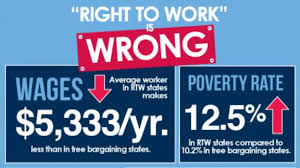
Representatives John Becker (Dist. 65) and Craig Reiden (Dist. 82) are proposing six different right-to-work measures for the 2020 ballot. This comes just seven years after Senate Bill 5 (S.B. 5), another right-to-work measure, was shot down by Ohio voters by a two to one margin.
These measures are different than S.B. 5 in that they seek to add right-to-work language to the Ohio constitution instead of creating state laws.
Click here to read more from WKBN.
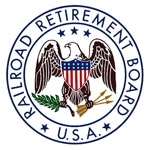
RRB field offices, operating with reduced staffs, will continue to accept new claims for unemployment and sickness benefits, as well as new applications for retirement, survivor, and disability benefits. People receiving ongoing benefit payments are still obliged to report any events that would affect the payment of their benefits.
Individuals calling the RRB’s toll-free telephone number (1-877-772-5772) and having difficulty in reaching an agency representative are asked to be patient as offices are operating with a very limited staff.
Three former rail workers were found not guilty of criminal negligence by a Canadian jury for their connection to the 2013 Lac-Megantic crash.
Locomotive engineer Tom Harding, traffic controller Richard Labrie and manager of train operations Jean Demaitre were charged in 2014 with criminal negligence causing the death of 47 people.
The jury began their deliberations Jan. 11 and after nine days of deliberations, came back with a not guilty verdict for all three charged.
Click here to read more from BBC News.

“I also want to take this opportunity to announce that the Department (DOT) will be seeking public input from across the transportation industry to identify existing barriers to innovation. This includes not only barriers that impact vehicles, but also impediments to innovations that can impact our highways, railroads, trains and motor carriers,” Chao said.
In response to Chao’s announcement, SMART Transportation Division National Legislative Director John Risch wrote in an email, “This rush to autonomous vehicles of all kinds should worry all transportation workers.
“We have been working with Congress to limit legislation on self-driving vehicles to automobiles and to not include buses and trucks. So far our efforts on that front have been successful,” Risch said. “We will continue to work on this issue, but the times they are a-changing.”
As part of Chao’s efforts to deregulate the transportation industry, notices for public comment have appeared in the Federal Register on behalf of DOT’s Federal Highway Administration (FHWA), Federal Transit Administration (FTA) and National Highway Traffic Safety Administration (NHTSA).
FHWA
- Click here to read the Request for Information on Integration of ADS into the Highway Transportation System as published by the Federal Register – to be published 01/18
FTA
- Click here to read the Request for Comments on Automated Transit Buses Research Program as published in the Federal Register
- Click here to read the Request for Comment on Removing Barriers to Transit Bus Automation
NHTSA
- Click here to read the Request for Comment on Removing Regulatory Barriers for Automated Vehicles from the Federal Register

